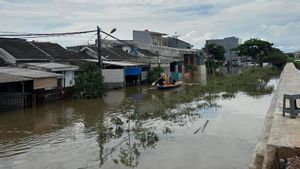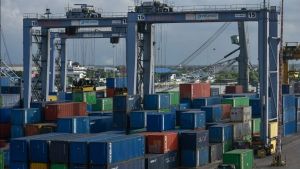JAKARTA - The story of Indonesia's independence is full of stories. The arrival of Japan, for example. Japan's presence was greeted with great fanfare. The courage of Japan to break the chain of Dutch colonialism became the estuary.
The Bumiputras began to dare to fly the Red and White Flag. What's more, the chanting of Indonesia Raya. The euphoria only lasted a moment. The original Japanese character came out. They banned the flying of the Indonesian flag. Later the Dutch relented. Raising the Red and White Flag is allowed to return.
The emergence of Japan as a great power brought a stir in all corners of the world. Japan is like a new hope among the people of Asia. The natives also believe that. The belief of the bumiputras is justified. The actions of Japan to crush the power of the Dutch and their minions in the archipelago are evidence.
The Dutch army was powerless to face the superiority of the Japanese military force. The Japanese did a tactic to take heart. The Japanese treat the Dutch as lower than animals. The Dutch at that time were made to occupy the lowest caste. This treatment is considered as the impact of treating the natives arbitrarily.
The Japanese treatment of the Dutch got the support of all the natives. They welcomed the Japanese arrival with great fanfare. Red and white flags were flown at every street corner. The song Indonesia Raya even continues to reverberate in the air.

However, Japan has recently taken issue. The only flag that is allowed to fly is the flag of Japan: Hinomaru. The only national anthem that can be played is none other than Kimigayo. All the natives also regretted Japan's actions. Sukarno, especially.
“When the Japanese troops came, Padang raised the Red and White flag. The people thought they were 'released.' After centuries of prohibition, it is heartwarming to see our sacred red and white flag waving majestically. But before long, announcements came out, posted on trees and in front of shops, that only the Rising Sun flag was allowed to be flown.”
“At the same time as this incident, which felt like a slap in the face, Japan took control of the newspapers. The 'liberation' of the city of Padang did not last long. I went to Captain Sakaguchi's office and asked for the flag-lowering order to be postponed. This order was too heavy for us to accept and would make things difficult, I said. If it is not done wisely, it may have serious consequences for both parties," explained Soekarno as written by Cindy Adams in Bung Karno's book: Connecting the Tongue of the Indonesian People (1965).
Red and White Flag FlyingThe government of the Land of the Rising Sun is no better than the Netherlands. Both are equally miserable Indonesian people. There is also a striking difference between the two, none other than the control of the authorities over the national movement.
In the Dutch era, the movement of the natives tended to be difficult to develop. The agendas of the movement that carried the narrative of Indonesian independence were prohibited by the Dutch. If you resist, imprisonment and exile await.
Things are different with the Japanese period. The national movement was not taken care of much. This lack of supervision has made the narrative of Indonesian independence come to the fore. In fact, it is able to raise awareness on a large scale to demand independence.
Especially when Japan's power in World War II began to weaken in 1944. This problem forced Japan to attract the sympathy of all the natives. So that Japan's actions in the war still get support.

At its peak, Japan promised Indonesian independence. As a form of seriousness. The Bumiputras began to be allowed to fly the Red and White Flag again. Moreover, the national anthem Indonesia Raya is free to play without any restrictions.
Relief from Japan is like fuel for struggle. The narrative of Indonesian independence began to be reviewed from pulpit to pulpit in all corners of the country. Everything was done purely to discuss Indonesian independence without the frills of being pro-Japanese, just like in the early days of its power in the archipelago.
"The making of the big red and white flag was originally requested by Shimizu, a Japanese officer who served as the head of the propaganda line in the Gunseikanbu (Japanese Military Government in Java and Sumatra)."
"The request is in accordance with the promise of independence that Japan had publicly declared in September 1944. According to that promise, the people were given permission to fly the red and white flag alongside the Japanese flag on major holidays," said Kukuh Pamuji in the book Examining the Jakarta Presidential Palace Museum (2020) .
The English, Chinese, Japanese, Arabic, and French versions are automatically generated by the AI. So there may still be inaccuracies in translating, please always see Indonesian as our main language. (system supported by DigitalSiber.id)











